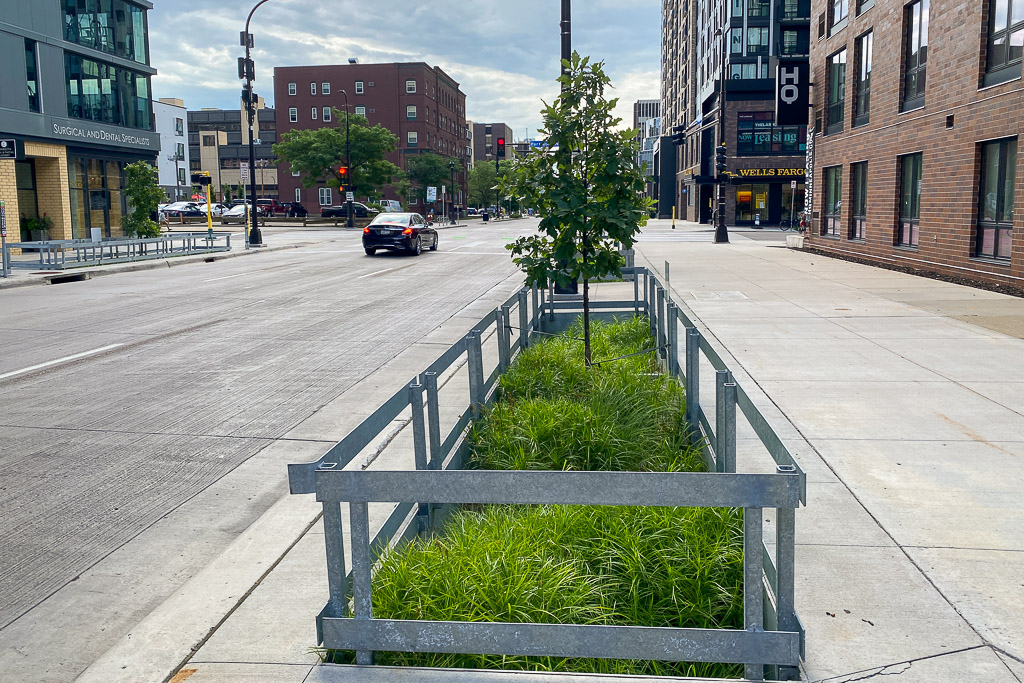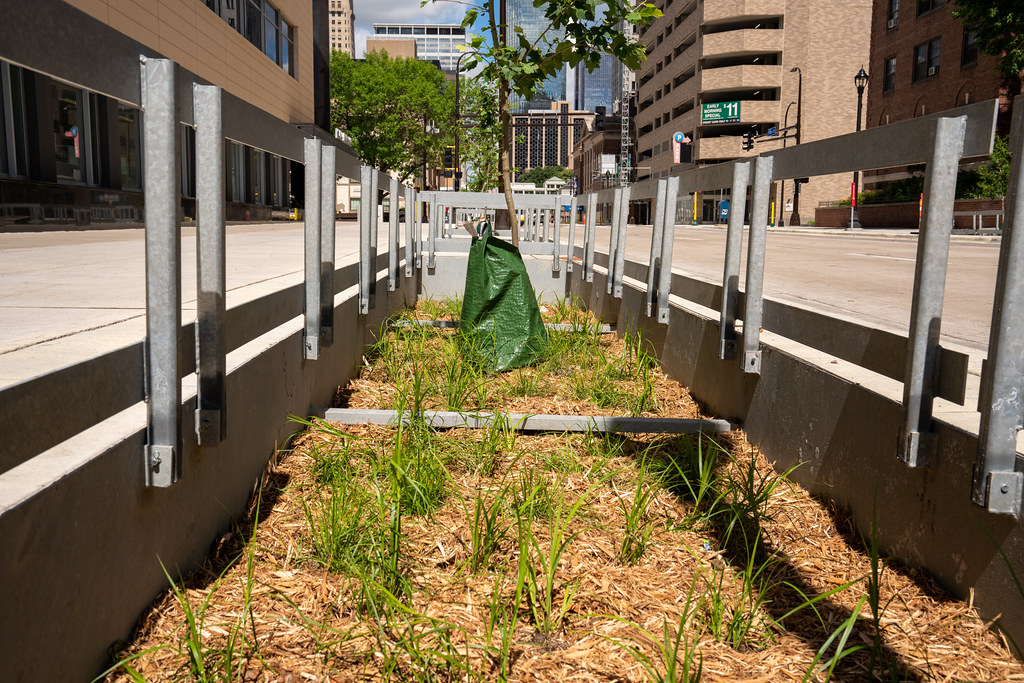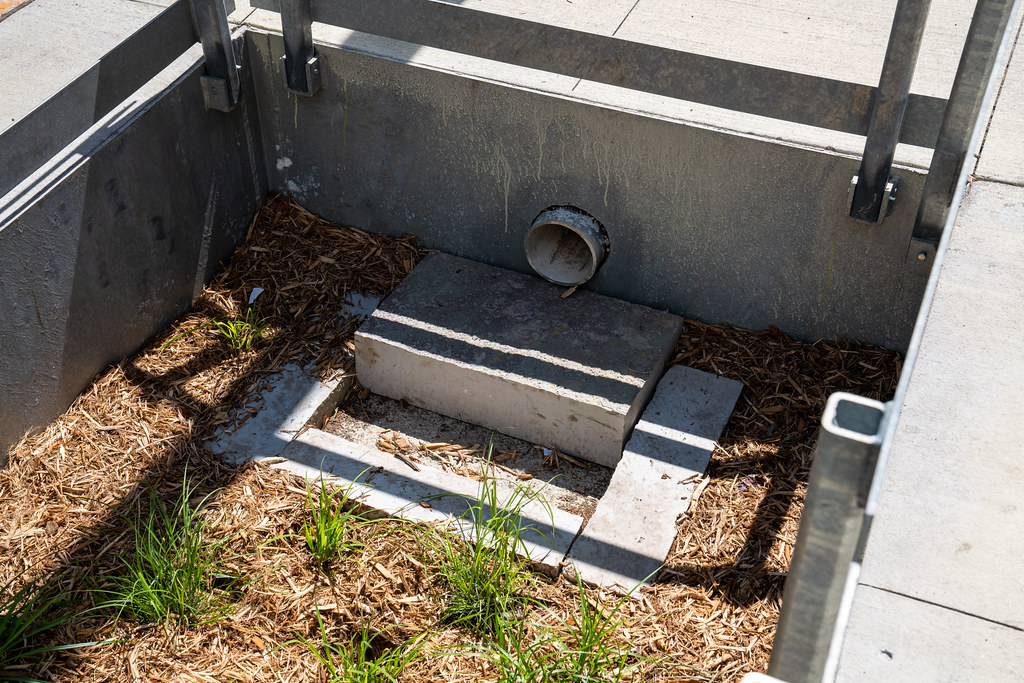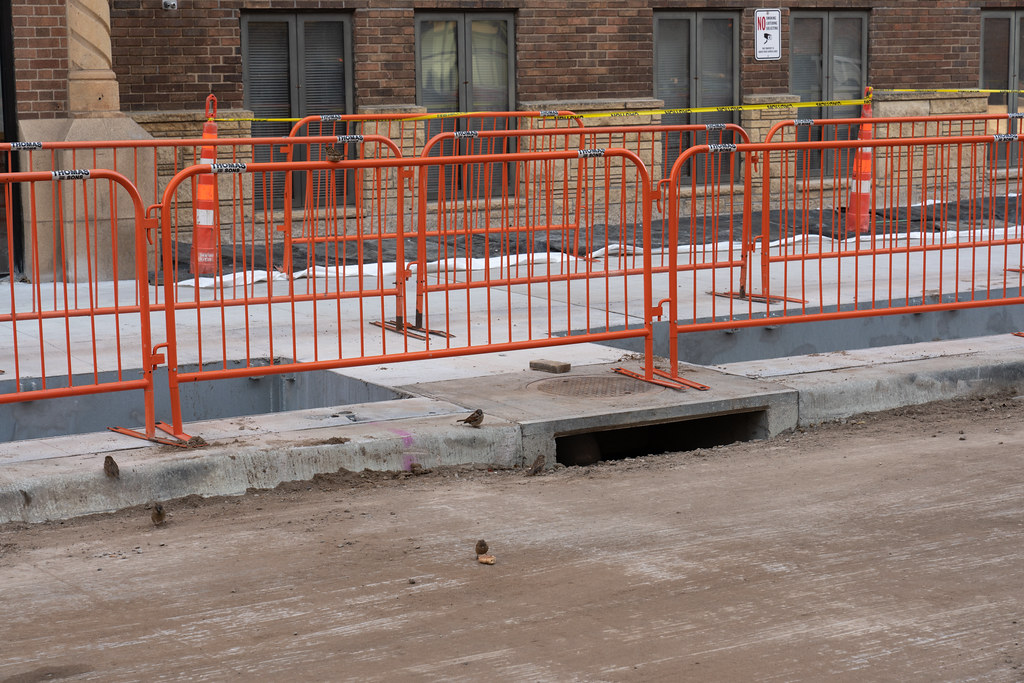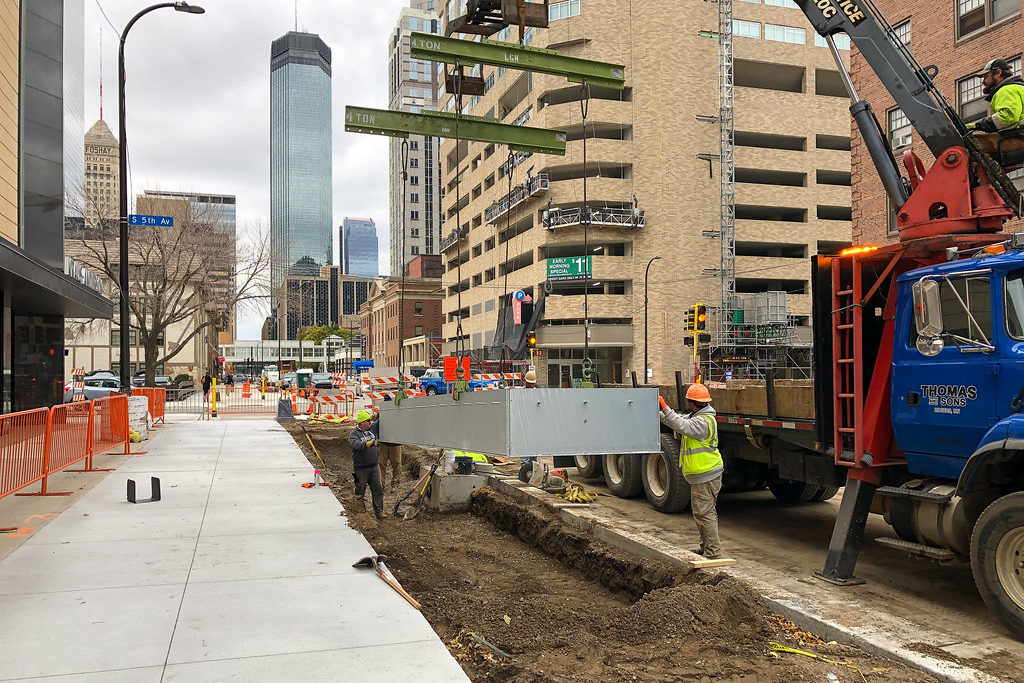Eighth Street Stormwater Planters
A pilot project uses stormwater planters with trees and sedges to manage runoff in downtown Minneapolis.
Overview
Project Details
City: Minneapolis
Type: Capital Improvement Project
Status: Completed
Timeline: 2016–2020
MWMO Funding: $295,000 Capital, $75,000 Engineering
Partners: City of Minneapolis Public Works; Downtown Improvement District
Contractors: Alliant Engineering; Barr Engineering
Nancy Stowe
Projects and Outreach Director
612-746-4978
Email Nancy Stowe
View Bio
The MWMO and its partners implemented a pilot project to introduce green infrastructure into downtown Minneapolis street design. One block of South 8th Street (between 5th and Portland Avenues) was reconstructed with stormwater planters that infiltrate polluted runoff and provide greening in a busy downtown corridor.
MWMO staff spent several years working with the City of Minneapolis and the Downtown Improvement District (DID) to identify opportunities to install green infrastructure on downtown city streets. After evaluating several potential projects, the partners chose the South 8th Street reconstruction to serve as a pilot. As part of the project, the city reduced the width of the vehicle lanes and widened the sidewalks, pulling the curb-line out into the roadway and creating boulevard space that was generally free from private utility conflicts. This made it possible to install stormwater planters without impacting pedestrian needs.
The infrastructure is located in city right-of-way (just behind the curb-line) and captures and treats runoff from the street, along with the alleys and sidewalks that drain to it (a total of 0.67 acres). The design includes five stormwater planters (four to six cells in each) with 2 feet of custom infiltration planting soils, 4 inches of shredded hardwood mulch, and a 1-foot water storage depth to allow for temporary pooling and drawdown within 48 hours. Each of the planters contains Accolade Elm, London Plane Tree, or Swamp White Oak trees (two trees per planter) and a few species of native sedges. The intention is for the sedges to colonize and fill the planting areas, creating a uniform look and making it easy to tell when there are invading weeds to remove. It is estimated that the planters will remove more than 200 pounds of total suspended solids and 1 pound of total phosphorus each year.
The project helps further DID’s goal of adding green spaces downtown to soften its largely hardscape environment, promoting wayfinding, and making the streets feel more human in scale. One of the ways this project helps accomplish that goal is by planting trees in large “planters” rather than a more traditional 5-foot-by-5-foot opening in the sidewalk. This also matches up with the Minneapolis Park and Recreation Board Forestry Department’s goals of helping provide better soils (and more of them) in order to grow larger, healthier trees.
The stormwater planters are supplemental to the street stormwater infrastructure, which captures street and boulevard runoff in catch basins to remove sediment and debris. From there, a sump catch basin will act as pretreatment to collect debris and move water into the planters. The structural planter boxes are 5-foot-by-10-foot galvanized steel frames with a shallow footing and an open bottom, allowing the trees and the water to take advantage of additional existing granular soils beneath the street or sidewalk. The shallow frame also allows reduces the likelihood of troublesome utility conflicts. The frames protect the plants and soils from foot traffic and avoid a potential tripping hazard from tree root heaving since the sidewalk is higher than the top of the mulch. The MWMO is monitoring the stormwater infiltration rates and volume capture at each of the five planters, observing vegetation health, and using information gathered to inform future similar projects. The modular design allows for easy replication in other areas, if those opportunities arise.
